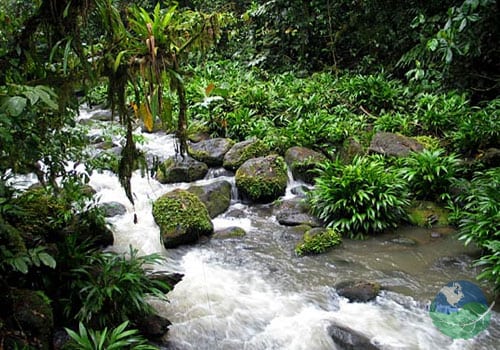Costa Rica, often dubbed a tropical paradise, is celebrated not only for its rich biodiversity but also for its captivating climate. Like an artist creating a masterpiece, the climate in Costa Rica is influenced by various factors, including its topography, geography, and proximity to the equator. This lush Central American nation, with its juxtaposition of stunning coastlines, towering mountains, and sprawling rainforests, presents a complex climatic tapestry that draws visitors from around the globe. Understanding this climatic phenomenon unveils the deeper reasons behind the nation’s appeal and its status as a premium eco-tourism destination.
Before delving deeper, it’s essential to grasp the broader categories of Costa Rica’s climate, which can be delineated into two primary seasons: the dry season and the rainy season. These seasons dictate not only the natural rhythm of life but also the activities and experiences available to visitors.
In the Pacific regions, the dry season extends from December to April, offering nearly five months of sunshine where tourists bask in warm, dry days ideal for beach excursions and outdoor adventures. Conversely, from May to November, the rainy season, also known as the “green season,” unfurls lush landscapes, fostering the vibrant flora and fauna that the country is known for. The allure of mild temperatures and the rejuvenation of natural habitats during the rainy months brings unique beauty and tranquility, while creating a phenomenal environment for various activities like birdwatching and hiking amidst waterfalls.
As one traverses the country, the diversity in microclimates unveils itself. No two regions of Costa Rica experience climate in exactly the same way, making it a veritable cornucopia of weather scenarios. This variance is largely attributive to the topographical features that offer distinct climatic experiences.
Mountains and Valleys: The Climate Roulette
The Central Mountain Range dramatically influences weather patterns, creating varied microclimates across the nation. The highlands, with their cooler temperatures and abundant precipitation, foster dense cloud forests teeming with biodiversity, akin to a natural sanctuary. Regions like Monteverde are characterized by a unique climate that promotes the growth of moss-laden trees and is a haven for myriad species including the resplendent quetzal.
Conversely, the lowland areas such as Guanacaste enjoy warmer, more consistent temperatures, merging the tranquility of the pacific dry season with a vibrant nightlife. The contrast between temperatures and rainfall across the elevations can often lead to bewildering weather phenomena, leaving both locals and visitors in awe of nature’s whimsy. Whether encountering a serene morning or the sudden onset of an afternoon downpour, travelers are reminded of nature’s power.
Rainforests and Ecosystems: The Rhythm of Life
The tropical rainforests of Costa Rica are another testament to its multifaceted climate. Dominated by high humidity and abundant rainfall, these areas create an ecosystem that thrives on the interplay of water and organic matter. The climate here serves as the lifeblood of the rainforest, serving cascading falls, dynamic rivers, and vibrant vegetation that connects the terrestrial and the aquatic worlds.
The Osa Peninsula, for instance, is often recognized as one of the most biologically intense places on Earth. It holds more species per square kilometer than many other areas. These rainforests remain verdant thanks to the almost daily rain that helps sustain the vast array of wildlife, from jaguars to scarlet macaws, elevating an impression of wonder that enchants both scientists and tourists alike.
Climate Change: An Evolving Challenge
As idyllic as Costa Rica may seem, the challenges posed by climate change loom ever closer. Alterations in precipitation patterns and rising temperatures threaten to disrupt the delicate balance of ecosystems. Notably vulnerable is the agricultural sector, which relies heavily on predictable weather cycles. Coffee, which thrives in specific climatic conditions, faces uncertain future prospects as climate fluctuations challenge cultivation.
The government’s proactive approach towards sustainability, including ambitious goals for carbon neutrality, underscores a broader acknowledgment of this peril. Initiatives to reforest and encourage eco-friendly practices are pivotal in embodying Costa Rica’s commitment to preserving its environment amidst the climate crisis.
A Cultural Appreciation: Harmony with Nature
Costa Rica’s climate not only influences ecosystems but also shapes its culture. The local population demonstrates a rich tradition of interconnectedness with their environment. Celebrations often correlate with seasonal changes—harvesting festivals and beach reveries are steeped in reverence for nature’s bounty.
The Ticos, as the locals affectionately call themselves, embody a harmonious relationship with the land. Their understanding of climate nuances allows them to adapt traditional practices to suit seasonal shifts. Travelers can engage in community-led eco-tourism initiatives, providing immersive encounters that elucidate the importance of preserving the climate while celebrating the more intimate aspects of Costa Rican life.
In conclusion, the climate of Costa Rica is a multilayered phenomenon that intricately weaves together environmental, cultural, and social threads. From its varied topographies to its vibrant ecosystems, the unique climatic features create a magnetic allure that captivates those who seek both adventure and serenity. As climate challenges emerge, Costa Rica’s resilience and commitment to sustainability not only affirm the nation’s dedication to harnessing and preserving its natural gifts but also inspire global advocacy for maintaining a delicate planetary balance. Visiting this green oasis is not merely an escape; it is an opportunity to connect profoundly with the Earth, understand its vulnerabilities, and celebrate the beauty of life in all its forms.





